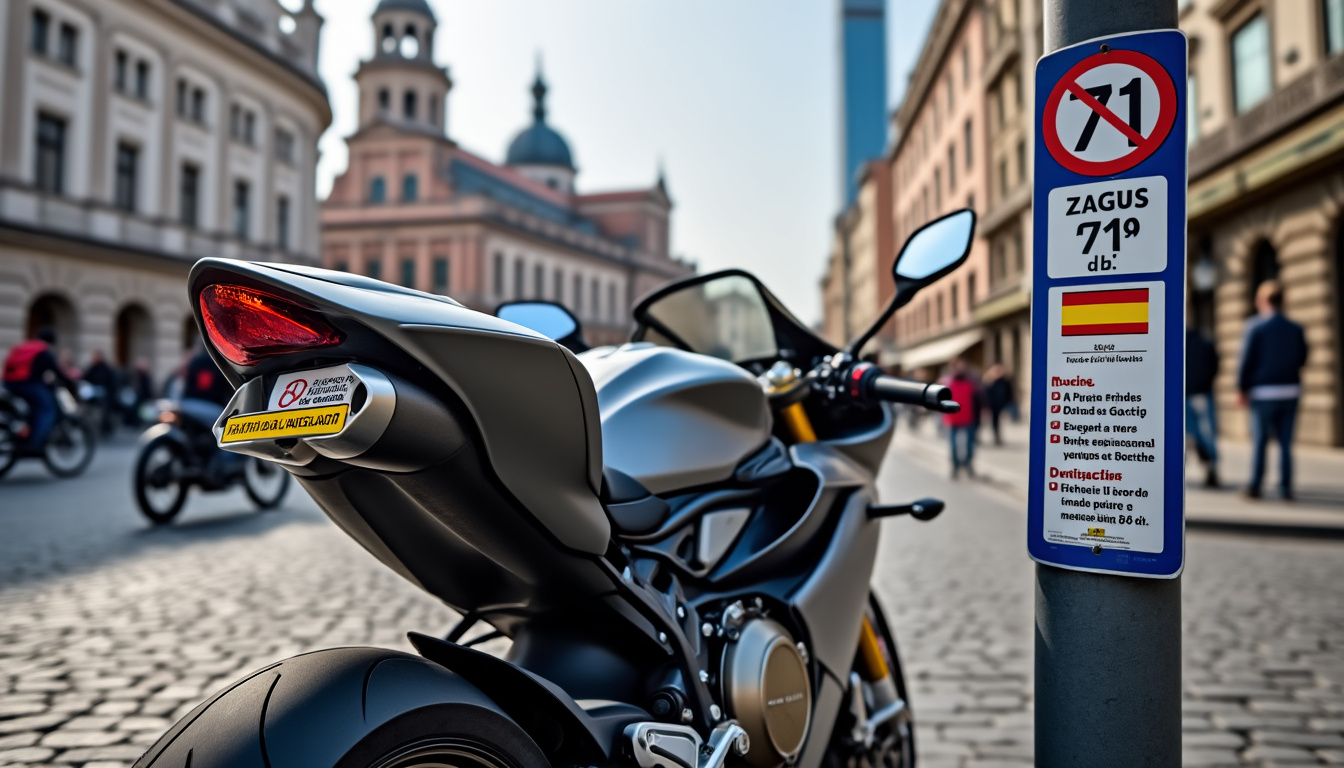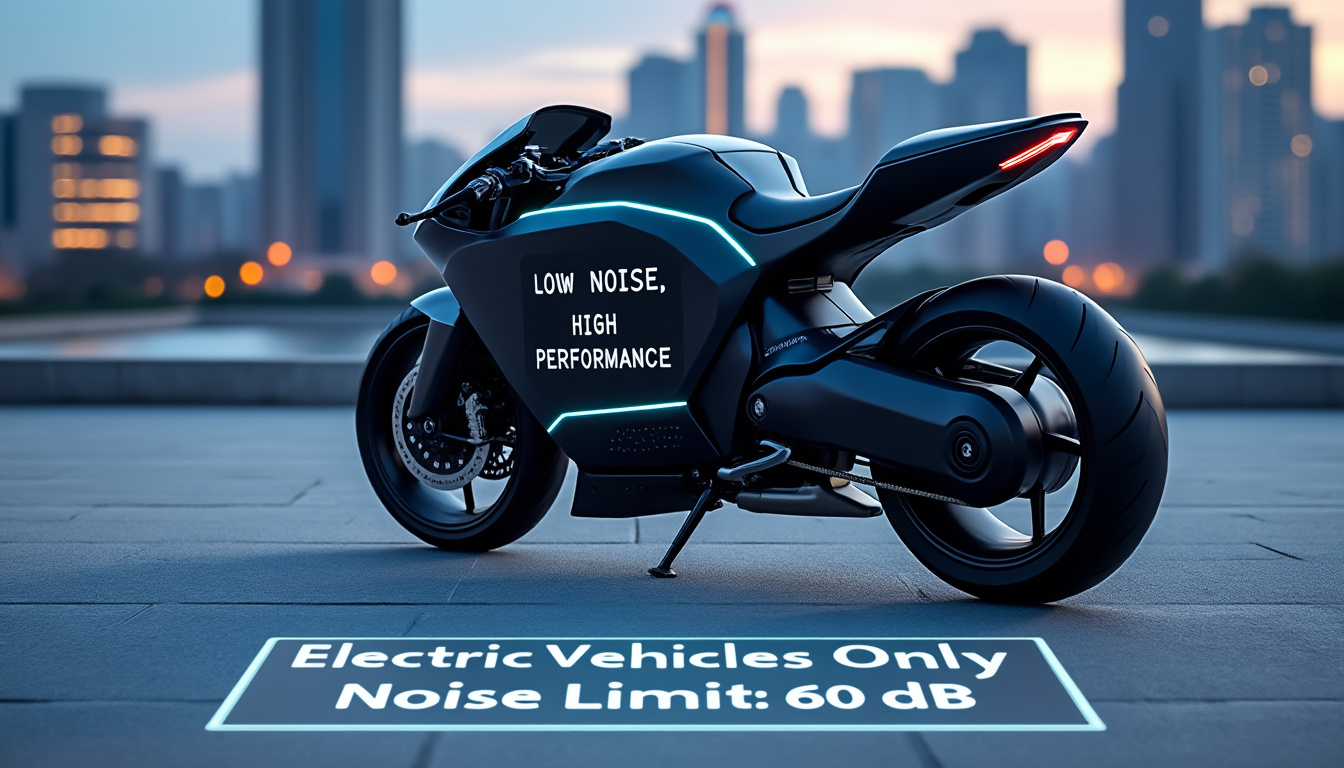motorcycles and scooters: a new regulation that will impact everything starting from January 1, 2025

The new regulation regarding motorcycles and scooters, which comes into effect on January 1, 2025, represents a significant turning point for all motorized two-wheeler drivers. While the debate over motorcycle noise continues, the European Union has taken stricter measures against noise pollution, resulting in major changes that will impact not only motorcyclists but also residents of our cities and countryside.
The CEE-UN Regulation R41.05: What new standards for motorcycles and scooters?
The CEE-UN Regulation R41.05, which comes into effect in January 2025, aims to tighten noise standards for newly registered motorcycles and scooters in the European Union. This regulation is part of a broader framework for protecting the sound environment, aimed at reducing noise pollution caused by motorized two-wheelers.
Previously, noise rules for motorcycles were mainly focused on urban areas, where traffic and population density are higher. The new standards introduce more comprehensive control criteria, encompassing traffic scenarios on country roads. This change responds to the need to preserve quiet in all environments, including those less densely populated, where motorcycle noise can also disturb residents.
Implementation of the new standards
Beginning in January 2025, all new motorcycles will have to undergo more rigorous noise tests. These include checks under various driving conditions, including during acceleration on country roads. This means that motorcycles from brands such as Yamaha, Honda, Suzuki, Kawasaki, and others will need to comply with these standards, marking a significant change in their designs and performances.
Here is an overview of the new standards imposed by the CEE-UN Regulation R41.05:
- Significant reduction in allowed noise levels.
- Noise tests to be performed under various traffic conditions.
- Direct impact on future generations of motorized two-wheelers.
The challenges of the new regulation
The transition to quieter motorcycles poses challenges not only for manufacturers but also for motorcyclists and the accessories sector. One of the major concerns is meeting these new requirements without compromising performance. Riding enthusiasts, such as users of Ducati or Harley-Davidson motorcycles, sometimes express fears about losing the distinctive sound of their bikes.
Another challenge is the adaptability of existing models. Motorcyclists will need to be informed of the implications for their vehicles if they do not comply with the new standards. A well-planned transition is therefore essential, both for dealers and for drivers.

The implications for motorcycle and scooter drivers
The impacts of these new standards are not limited to technical aspects. They also raise questions about the responsibility of drivers in relation to the new regulations. Indeed, motorcyclists will have to ensure that their vehicles comply with the new restrictions, under penalty of sanctions.
Fines can reach up to 135 euros for non-compliance with the new noise standards, not to mention the implications for driving rights for motorcyclists. Furthermore, a points deduction from their license may also apply in case of non-compliance, which requires increased vigilance from drivers.
Anticipation and preparation by users
To avoid the inconveniences related to this regulation, motorcyclists are encouraged to take the initiative. Here are some actions to consider:
- Gather information about the new standards and their impact on their motorcycle.
- Plan visits to dealers to ensure compliance of their vehicles.
- Study potential modifications that may be necessary for existing motorcycles.
Reputable brands like BMW Motorrad or Piaggio are already committed to developing compliant models, featuring advanced technologies to meet noise standards. This reflects a shift towards innovative solutions to balance performance and respect for the sound environment.
A change in lane-splitting traffic behavior
Another major change effective January 1, 2025, is the prohibition of lane-splitting in France. This practice, which has been trialed since 2016, will now be banned, and motorcyclists must adhere to the highway code to avoid significant fines and points deduction from their licenses.
This decision primarily aims to enhance road safety. The reality of traffic where motorcycles travel between lanes of cars, although seen as a fluidity of traffic, can also lead to accidents and dangerous situations for motorcyclists and other road users.
The stakes of this new prohibition
This regulation raises several stakes for motorcyclists and other stakeholders in the road world. The consequences for road users and motorists can be significant. Here are some points to consider:
- Impact on travel time for motorcyclists.
- Need for adaptation of motorcyclist behaviors on the road.
- Increased risks of road congestion, particularly during peak hours.
It is essential that drivers fully understand these new rules and adapt accordingly. Safety must remain the priority, and communication between motorcyclists and motorists is more crucial than ever to avoid conflicts on the road.
Technologies to prioritize: quieter motorcycles for a sustainable future
To meet the demands of the new regulation, motorcycle manufacturers will need to invest in innovative research and development technologies. Brands like Aprilia and SYM are already exploring hybrid or electric solutions that could, in theory, perfectly align with this new legislation.
Electric motorcycles, which produce virtually no noise, are becoming increasingly common on the market. Models from renowned manufacturers are under development and are expected to emerge in the coming years, thereby alleviating concerns related to noise pollution.
Examples of technological solutions
Diverse technological solutions are already being considered by manufacturers:
- Optimized exhaust systems to reduce noise.
- Sound regulation technologies integrated into the engine.
- Improved acoustic quality components in high-end models.
Manufacturers face a significant challenge: ensuring that motorcycles remain high-performing while adhering to noise standards. This compromise must be accompanied by a genuine willingness from the industry to embrace a greener approach, as the path towards a sustainable future necessarily involves collective efforts.

Conclusion: towards a cultural change within the motorcycling community
The implementation of the CEE-UN Regulation R41.05 and the ban on lane-splitting mark a new chapter for motorcyclists in Europe. While some welcome these changes as essential improvements for our modern society, others see them as a restriction of their freedoms.
The challenge lies in the ability of the motorcycling community to adapt to these new realities while continuing to enjoy their passion for riding. A balance must be found between compliance with regulations and the joy of motorcycling. Thus, these new standards could herald a new era for motorcycling, promoting harmony between motorcyclists and the community, respecting everyone's rights.
Leave a Reply



Articles relatifs